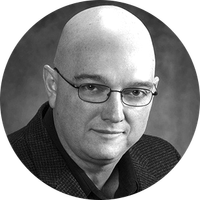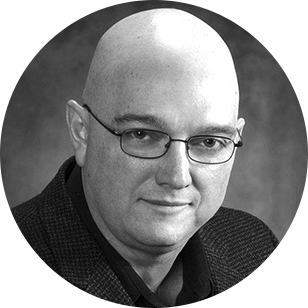How the Planned Parenthood videos expose abortion for what it truly is
Human organs come from human beings


A series of undercover videos from a pro-life group have rocked Planned Parenthood — and the national debate over abortion.
In all three videos, officials from the nation's largest abortion provider discuss compensation for extracting organs from aborted fetuses, including, in one case, over wine and salad at lunch. Much of the debate has been over whether this constitutes sales or compensation. But the much larger questions concern how abortion has been sold, and what it truly is. That's where we ought to focus our attention.
The conversations clandestinely captured by the activist group Center for Medical Progress would sound familiar to anyone who has held negotiations with vendors and buyers over pricing. The level of compensation changes depending on the organs involved and how cleanly they can be separated. One executive claims that all Planned Parenthood clinics want is reasonable compensation, but if they "come out a little ahead," they're "happy to do it." Another jokes that she wants a Lamborghini and doesn't want to name a figure first for fear of getting "lowballed."
The Week
Escape your echo chamber. Get the facts behind the news, plus analysis from multiple perspectives.

Sign up for The Week's Free Newsletters
From our morning news briefing to a weekly Good News Newsletter, get the best of The Week delivered directly to your inbox.
From our morning news briefing to a weekly Good News Newsletter, get the best of The Week delivered directly to your inbox.
In the latest video, which depicts an actual dissection of aborted material as a technician identifies the human organs for transfer, a vice president of a regional chapter of Planned Parenthood discusses the benefits of pricing the individual parts over a flat rate for each specimen. As the technician points out intact kidneys and a spinal column in a pie dish of the torn-apart remains of a first-trimester fetus, Dr. Savita Ginde tells the undercover reporter posing as a buyer that she prefers to transact as a "per-item thing." That "works a little better," Ginde says on hidden camera, "just because we can see how much we can get out of it."
To many people, these conversations sound very much like Planned Parenthood is selling tissue based on market value. Even if the prices seem rather low on a "per-item thing," the transfers reduce the costs for disposal, turning a cost into a revenue-producing action, as John McCormack notes at The Weekly Standard. If the transactions of human flesh don't count as profit, they at least reduce cost.
Selling human organs and tissue for profit violates federal law. However, the law also allows for compensation for the costs to produce the tissue, a point that Planned Parenthood and its defenders have raised repeatedly since the videos started emerging. Does this fit within the law, or do Planned Parenthood and its buyers cross the line? The New York Times calls this "a gray zone, legally," but does concede that the videos raise questions about "what the law allows."
Certainly, Congress should look into how its exceptions for tissue donation have been exploited. But this isn't the main issue seen in these videos.
A free daily email with the biggest news stories of the day – and the best features from TheWeek.com
Planned Parenthood wants to keep the debate on these points to deflect from the real debate — the nature of abortion itself, and the deliberate minimization in language that has allowed it. Abortion defenders claim that the procedure does not terminate life, and that it has no more moral meaning than excising a tumor or a cyst, a "clump of cells" in the most common construction. On Twitter, a young actor in Hollywood offered a more crude assessment this week. "A pile of goop should not have more rights than a human being," Lucas Neff tweeted, "period."
Now, though, we see that the same abortion clinics that argue for the "pile of goop" status see things very, very differently when it comes time to benefit from the results of their services. They adjust their techniques to extract and market human organs for buyers to meet demand, with the clear value attached on the basis of both their humanity and specificity. Clinic executives like Dr. Ginde want to negotiate those markets on a per-item basis because of the value that humanity and specificity provides to both parties, "just because we can see how much we can get out of it."
The true danger to Planned Parenthood and the entire industry is the exposure of their hypocrisy. The two positions of "clumps of cells" and negotiating over human organs from abortions are mutually exclusive. One cannot extract human organs from "a pile of goop," or from tumors or undifferentiated "clumps of cells." Human organs come from human beings, and the only way to harvest them from unborn human beings is to kill them first. The videos cut through all of the misdirection, all of the antiseptic generalities used in defense of abortion, to expose its true nature — and that's what has Planned Parenthood panicked over the videos.
For those who oppose abortion, the debate over sales of human organs and tissue is very tempting, and certainly should be engaged. However, the focus should be on the admitted humanity of those whose lives come to an end in those clinics rather than the legal technicalities of compensation and sales for the "products" that result from them. Expose the lie, and let's finally have the conversation about the value of human life in all its stages that we have spent the last 42 years avoiding.
Edward Morrissey has been writing about politics since 2003 in his blog, Captain's Quarters, and now writes for HotAir.com. His columns have appeared in the Washington Post, the New York Post, The New York Sun, the Washington Times, and other newspapers. Morrissey has a daily Internet talk show on politics and culture at Hot Air. Since 2004, Morrissey has had a weekend talk radio show in the Minneapolis/St. Paul area and often fills in as a guest on Salem Radio Network's nationally-syndicated shows. He lives in the Twin Cities area of Minnesota with his wife, son and daughter-in-law, and his two granddaughters. Morrissey's new book, GOING RED, will be published by Crown Forum on April 5, 2016.
-
 Political cartoons for December 11
Political cartoons for December 11Cartoons Thursday's political cartoons include sinking approval ratings, a nativity scene, and Mike Johnson's Christmas cards
-
 It Was Just an Accident: a ‘striking’ attack on the Iranian regime
It Was Just an Accident: a ‘striking’ attack on the Iranian regimeThe Week Recommends Jafar Panahi’s furious Palme d’Or-winning revenge thriller was made in secret
-
 Singin’ in the Rain: fun Christmas show is ‘pure bottled sunshine’
Singin’ in the Rain: fun Christmas show is ‘pure bottled sunshine’The Week Recommends Raz Shaw’s take on the classic musical is ‘gloriously cheering’
-
 Has Zohran Mamdani shown the Democrats how to win again?
Has Zohran Mamdani shown the Democrats how to win again?Today’s Big Question New York City mayoral election touted as victory for left-wing populists but moderate centrist wins elsewhere present more complex path for Democratic Party
-
 Millions turn out for anti-Trump ‘No Kings’ rallies
Millions turn out for anti-Trump ‘No Kings’ ralliesSpeed Read An estimated 7 million people participated, 2 million more than at the first ‘No Kings’ protest in June
-
 Ghislaine Maxwell: angling for a Trump pardon
Ghislaine Maxwell: angling for a Trump pardonTalking Point Convicted sex trafficker's testimony could shed new light on president's links to Jeffrey Epstein
-
 The last words and final moments of 40 presidents
The last words and final moments of 40 presidentsThe Explainer Some are eloquent quotes worthy of the holders of the highest office in the nation, and others... aren't
-
 The JFK files: the truth at last?
The JFK files: the truth at last?In The Spotlight More than 64,000 previously classified documents relating the 1963 assassination of John F. Kennedy have been released by the Trump administration
-
 'Seriously, not literally': how should the world take Donald Trump?
'Seriously, not literally': how should the world take Donald Trump?Today's big question White House rhetoric and reality look likely to become increasingly blurred
-
 Will Trump's 'madman' strategy pay off?
Will Trump's 'madman' strategy pay off?Today's Big Question Incoming US president likes to seem unpredictable but, this time round, world leaders could be wise to his playbook
-
 Democrats vs. Republicans: who are US billionaires backing?
Democrats vs. Republicans: who are US billionaires backing?The Explainer Younger tech titans join 'boys' club throwing money and support' behind President Trump, while older plutocrats quietly rebuke new administration
